Are you wondering what muscle recovery times are?
If you are a fitness enthusiast or an athlete, you surely know the importance of muscle recovery to achieve optimal results . But do you really know how recovery times change and how to best manage them?
In this article, we’ll explore the basics of muscle recovery and how to keep your muscles healthy. We’ll show you how to identify signs that you need to recover and how to time it right. Plus, you’ll discover nutrition strategies, exercises, and massage techniques to help shorten your recovery time and promote better muscle repair.
Keeping your muscles healthy is not just about recovery, but also about day-to-day management.
Understanding these factors will help you customize your recovery program to maximize results.
If you want to optimize your sports performance you should take a DNA test to evaluate how to train better.
So, if you’re ready to delve deeper into muscle recovery times and learn how to best manage them, keep reading!
Muscle Recovery Basics: How to Keep Your Muscles Healthy
Muscles play a vital role in our bodies and keeping them healthy is essential to achieving optimal performance and preventing injury.
In this section, we’ll explore the basics of muscle recovery and give you tips on how to keep your muscles healthy.
1. Importance of Warming Up and Progressive Development
Before starting any strenuous physical activity, it is essential to take the time to warm up. Warming up helps to increase muscle temperature, improve flexibility, and prepare the muscles for the upcoming activity.
You can perform dynamic stretching exercises , light movements or specific exercises for the muscle area you are going to train.
Additionally, it is important to take a gradual approach to developing the intensity and duration of your workout. Gradually increasing your workload helps your muscles adapt and avoid overuse injuries. Progressive training allows your muscles to recover properly between sessions, allowing for better muscle growth and recovery.
2. Proper Nutrition for Muscle Recovery
Nutrition plays a crucial role in muscle recovery. After an intense workout, muscles need nutrients to repair damaged tissue and replenish energy reserves. Here are some key points to consider:
-
Protein : Protein provides the amino acids needed for protein synthesis, which is essential for muscle repair and growth. Make sure you consume high-quality protein sources such as lean meat, fish, eggs, dairy, and legumes.
-
Carbohydrates : Carbohydrates are the main source of energy for muscles. After training, it is important to replenish glycogen stores by consuming complex carbohydrates such as whole grains, fruits and vegetables.
-
Healthy Fats: Healthy fats provide long-term energy and play an important role in hormone production. Choose healthy fat sources such as avocados, nuts, seeds, and olive oil.
-
Hydration : Make sure you drink enough to stay hydrated during your workout and recovery. Water helps flush out toxins that build up during exercise and promotes proper muscle function.
3. Quality Rest and Sleep
Rest is a key element in muscle recovery . During sleep, the body releases growth hormone, which stimulates protein synthesis and promotes muscle tissue regeneration. Make sure you get at least 7-8 hours of quality sleep each night to allow your body to recover properly.
Additionally, it is important to schedule active rest days during the week. Active rest involves dedicating a day or two to low-intensity exercise or recovery activities such as stretching, yoga, or a light walk . This will allow your muscles to recover, reduce the risk of injury, and improve your overall performance.
4. Stretching and Joint Mobility
An often overlooked aspect of muscle recovery is relaxing and maintaining muscle flexibility . Regular stretching helps improve joint mobility, reduce muscle tension, and prevent injury. Spend time performing specific stretches for the muscle groups you’ve worked, both before and after your workout.
Additionally, you can consider adopting practices such as yoga or pilates, which promote greater flexibility and joint mobility.
5. Using Muscle Recovery Tools
In addition to the practices mentioned above, you can use specific tools to promote muscle recovery , such as deep tissue massage rollers (foam rollers), massage balls, or pneumatic compression machines. These tools help relieve muscle tension, improve circulation, and speed up the recovery process.
Taking care of your muscles is essential to achieving lasting results and preventing injury. By following the basics of muscle recovery and adopting a holistic approach to health, you can keep your muscles healthy and optimize your physical performance.
How to Identify Recovery Times
The first step to effectively managing muscle recovery times is knowing how to correctly identify them. In this section, we will explore why recovery is necessary, the signs that indicate the need for recovery, and the process for identifying the right times to do so.
Recovery Time Identification Process
To identify the appropriate recovery times, it is important to adopt a personalized approach. Each person is different and has specific needs in terms of muscle recovery. Here are some steps to follow to identify the recovery times:
-
Listen to your body: Pay attention to the signals your body sends you. If you feel persistent pain, fatigue, and a decrease in performance, it is likely that your muscles need more time to recover. Do not ignore these signals and respect your body's needs.
-
Keep a training journal: Recording your workouts and post-workout feelings can help you determine when to rest. Record your performance, energy levels, sleep quality, and other relevant metrics to understand how your body responds to training.
-
Experiment and adapt: Every person is different and may require different recovery times. Experiment with different recovery periods between workouts and see how your body responds. You can start with longer recovery times and gradually shorten them if you feel ready.
-
Consult a Professional: If you are having trouble identifying appropriate recovery times or need more personalized guidance, you can consult a fitness professional or muscle rehabilitation specialist. They will be able to assess your specific needs and provide you with personalized guidance.
Identifying proper recovery times is essential to optimizing your workout results and preventing injury. Take the time to listen to your body and tailor your recovery program to your individual needs.
If you want to optimize your sports performance you should take a DNA test to evaluate how to train better.
How to Shorten Recovery Times
Once you have identified your necessary recovery times, you can adopt several strategies to shorten them and promote better muscle repair.
1. Recovery Exercises
Recovery exercises can help relieve muscle tension, improve circulation, and speed up the recovery process. Here are some recovery exercises you can include in your routine:
-
Active and Passive Stretching: Stretching helps to lengthen muscles and reduce tension that builds up during exercise. You can do both active stretching, which actively engages the muscles, and passive stretching, which uses tools such as resistance bands or a partner to achieve a deeper stretch.
-
Joint mobilization exercises: Movements that involve the entire range of motion of the joint help improve the mobility and flexibility of the joints. You can perform exercises such as shoulder rotations, leg extensions or circular movements of the hips.
-
Low-intensity exercises: Low-intensity exercises, such as light walking, swimming, or low-resistance cycling, stimulate blood circulation and promote muscle recovery without adding additional stress to tired muscles.
2. Massage Techniques for Recovery
Massage is a great technique to reduce muscle tension, improve blood circulation and promote muscle recovery. You can use different massage techniques to speed up recovery time:
-
Self-massage with a deep tissue roller (foam roller): The foam roller is a tool that allows you to deeply self-massage your muscles. You can use the foam roller to relax your muscles, loosen knots and improve blood circulation.
-
Massage with massage balls or specific rollers: Massage balls or specific rollers can be used to target specific points of muscle tension. You can apply pressure to these points to release tension and promote recovery.
-
Professional Massage: If you have the opportunity, you can also consider booking a professional massage session. An experienced massage therapist will be able to identify areas of tension and apply targeted techniques to promote muscle recovery.
By using nutritional strategies, recovery exercises, and massage techniques, you can speed up muscle recovery time and promote better tissue repair. Experiment with different strategies and find the ones that work best for you. Remember that recovery is an individual process and it may take time and experimentation to find the approach that works best for your body.
If you want to optimize your sports performance you should take a DNA test to evaluate how to train better.




Leave a comment
This site is protected by hCaptcha and the hCaptcha Privacy Policy and Terms of Service apply.